
James Neville Mason was an English actor. He achieved considerable success in British cinema before becoming a star in Hollywood. He was the top box-office attraction in the UK in 1944 and 1945; his British films included The Seventh Veil (1945) and The Wicked Lady (1945). He starred in Odd Man Out (1947), the first recipient of the BAFTA Award for Best British Film.

The Afrika Korps or German Africa Corps was the German expeditionary force in Africa during the North African campaign of World War II. First sent as a holding force to shore up the Italian defense of its African colonies, the formation fought on in Africa, under various appellations, from March 1941 until its surrender in May 1943. The unit's best known commander was Field Marshal Erwin Rommel.

Michael Rennie was a British film, television and stage actor, who had leading roles in a number of Hollywood films, including his portrayal of the space visitor Klaatu in the science fiction film The Day the Earth Stood Still (1951). In a career spanning more than 30 years, Rennie appeared in more than 50 films and in several American television series.
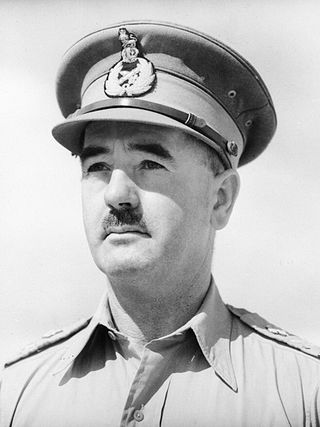
Lieutenant General Sir Leslie James Morshead, was an Australian soldier, teacher, businessman, and farmer, whose military career spanned both world wars. During the Second World War, he led the Australian and British troops at the Siege of Tobruk (1941) and at the Second Battle of El Alamein, achieving decisive victories over Erwin Rommel's Afrika Korps. His soldiers nicknamed him "Ming the Merciless", later simply "Ming", after the villain in the Flash Gordon comics.

Operation Sonnenblume was the name given to the dispatch of German and Italian troops to North Africa in February 1941, during the Second World War. The Italian 10th Army had been destroyed by the British, Commonwealth, Empire and Allied Western Desert Force attacks during Operation Compass (9 December 1940 – 9 February 1941). The first units of the new Deutsches Afrikakorps (DAK), commanded by Generalleutnant Erwin Rommel, departed Naples for Africa and arrived on 11 February 1941. On 14 February, advanced units of the 5th Light Afrika Division, Aufklärungsbataillon 3 and Panzerjägerabteilung 39 arrived at the Libyan port of Tripoli and were sent immediately to the front line east of Sirte.

Robert Guy Newton was an English actor. Along with Errol Flynn, Newton was one of the more popular actors among the male juvenile audience of the 1940s and early 1950s, especially with British boys. Known for his hard-living life, he was cited as a role model by the actor Oliver Reed and the Who's drummer Keith Moon.
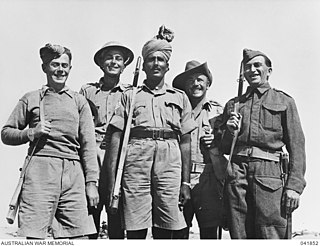
The Siege of Tobruk took place between 10 April and 27 November 1941, when elements of the Allied Army were trapped and besieged in the North African port of Tobruk by German and Italian forces. The defenders quickly became known as The Rats of Tobruk.
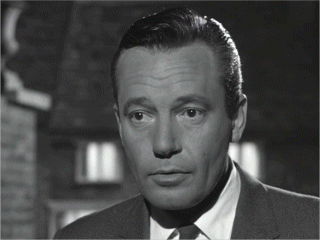
Charles William Tingwell AM, known professionally as Bud Tingwell or Charles 'Bud' Tingwell, was an Australian film, television, theatre and radio actor. One of the veterans of Australian film, he acted in his first motion picture in 1946 and went on to appear in more than 100 films and numerous TV programs in both the United Kingdom and Australia.

The Western Desert campaign took place in the deserts of Egypt and Libya and was the main theatre in the North African campaign of the Second World War. Military operations began in June 1940 with the Italian declaration of war and the Italian invasion of Egypt from Libya in September. Operation Compass, a five-day raid by the British in December 1940, was so successful that it led to the destruction of the Italian 10th Army over the following two months. Benito Mussolini sought help from Adolf Hitler, who sent a small German force to Tripoli under Directive 22. The Afrika Korps was formally under Italian command, as Italy was the main Axis power in the Mediterranean and North Africa.

Operation Brevity was a limited offensive conducted in mid-May 1941, during the Western Desert Campaign of the Second World War. Conceived by the commander-in-chief of the British Middle East Command, General Archibald Wavell, Brevity was intended to be a rapid blow against weak Axis front-line forces in the Sollum–Capuzzo–Bardia area of the border between Egypt and Libya. Although the operation got off to a promising start, throwing the Axis high command into confusion, most of its early gains were lost to local counter-attacks, and with German reinforcements being rushed to the front the operation was called off after one day.

Tobruk is a 1967 American drama war film directed by Arthur Hiller and starring Rock Hudson and George Peppard. The film was written by Leo Gordon and released through Universal Pictures.
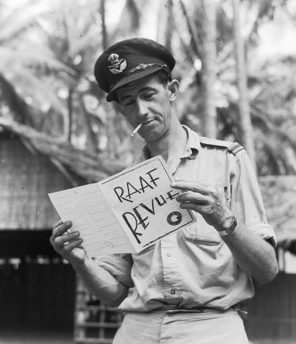
John William Pilbean Goffage MBE, known professionally as Chips Rafferty, was an Australian actor. Called "the living symbol of the typical Australian", Rafferty's career stretched from the late 1930s until he died in 1971, and during this time he performed regularly in major Australian feature films as well as appearing in British and American productions, including The Overlanders and The Sundowners. He appeared in commercials in Britain during the late 1950s, encouraging British emigration to Australia.

The Desert Fox is a 1951 American biographical war film from 20th Century Fox about the role of German Field Marshal Erwin Rommel in World War II. It stars James Mason in the title role, was directed by Henry Hathaway, and was based on the book Rommel: The Desert Fox by Brigadier Desmond Young, who served in the British Indian Army in North Africa.

The Rats of Tobruk were soldiers of the Australian-led Allied garrison that held the Libyan port of Tobruk against the Afrika Corps, during the Siege of Tobruk in World War II. The siege started on 11 April 1941 and was relieved on 10 December. The port continued to be held by the Allies until its surrender on 21 June 1942.

The Rats of Tobruk is a 1944 Australian film directed by Charles Chauvel. An abridged version was released in the United States in 1951 as The Fighting Rats of Tobruk. The film follows three drover friends who enlist in the Australian Army together during World War II. Their story is based on the siege of the Libyan city of Tobruk in North Africa by Rommel's Afrika Korps. The partly Australian defenders held the city for 250 days before being relieved by British forces.

The Battle of Mersa Matruh was fought from 26 to 29 June 1942, following the defeat of the Eighth Army at the Battle of Gazala and was part of the Western Desert Campaign of the Second World War. The battle was fought with the German–Italian Panzer Army Afrika (Panzerarmee Afrika. The Eighth Army comprised X Corps and XIII Corps.

Operation Skorpion from 26 to 27 May 1941, was a military operation during the Western Desert Campaign of the Second World War. The operation was conducted by Axis forces under the command of Colonel Maximilian von Herff and British forces under Lieutenant-General William "Strafer" Gott. A counter-attack was made on British positions at Halfaya Pass in north-western Egypt, which had been captured during Operation Brevity (15–16 May).Unternehmen Skorpion was the second offensive operation commanded by Rommel in Africa.
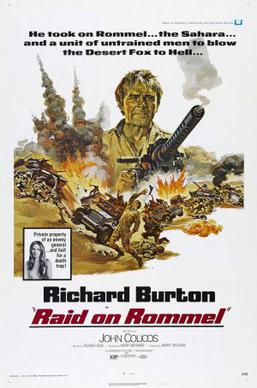
Raid on Rommel is an American B movie in Technicolor from 1971, directed by Henry Hathaway and set in North Africa during the Second World War. It stars Richard Burton as a British commando attempting to destroy German gun emplacements in Tobruk. Much of the action footage was reused from the 1967 film Tobruk, and the storyline is also largely the same.
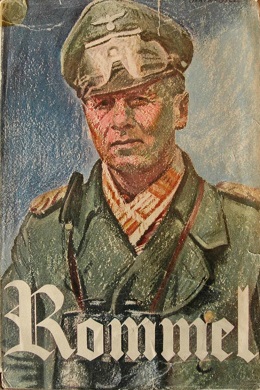
Rommel: The Desert Fox is a 1950 biography of German Field Marshal Erwin Rommel by Desmond Young. The book was the first biography of Rommel and enjoyed immense popularity, especially in Britain. The book led the Western Allies, particularly the British, to depict Rommel as the "good German" and "our friend Rommel", contributing to the formation of the Rommel myth.
Heinrich von Prittwitz und Gaffron was a general officer in the Heer (Army) branch of the Wehrmacht of Nazi Germany during World War II. He was commander of the 14th and 15th Panzer Divisions and was killed in action in the early stages of the Siege of Tobruk.


















